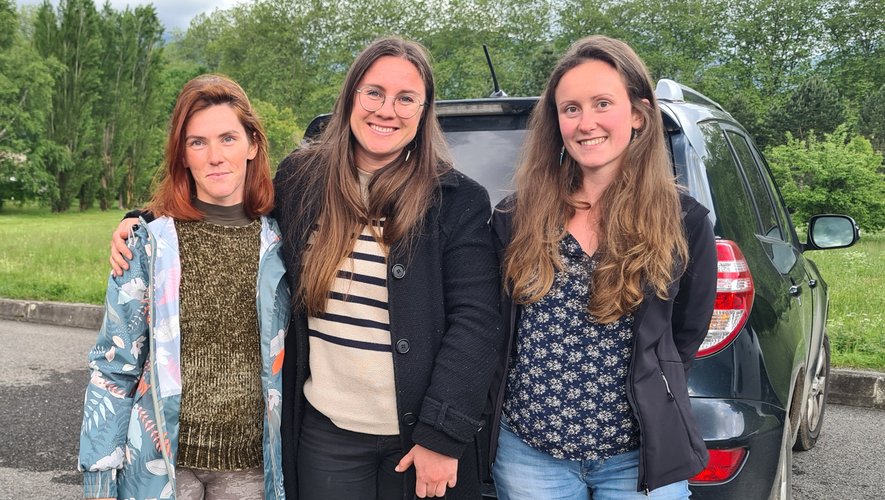In the last year of general medicine, interns confide in their expectations. Three of them decided to put their suitcase in Ariège.
It’s a successful bet and a great reward for the Department, SESTA and the Ariège attractiveness agency, which for several years have been creating synergy with the aim of attracting new doctors to the area.
Indeed, on the occasion of the 5th edition of the “Préhisto Night” evening which took place on May 16 at the prehistory park in Tarascon-sur-Ariège, around forty medical interns were able to discover the strengths and attractiveness of the department. Three of them have been seduced and are about to settle in Ariège.
It was therefore at the prehistoric park that around forty future doctors were warmly welcomed last Tuesday. A gathering which notably marked the launch of their internship period in the department, and which made it possible to find out more about their expectations and the determining points for their installation.
Quality of life first
And it is unanimously that “quality of life” was mentioned as being the factor that will tip the scales: “Today, we are all looking to settle in a place where we will have a quality of life pleasant, without having any overpressure”, confided Yannick Lorero, currently in 9th grade and to continue: “Many factors come into play. As far as I am concerned, I need a setting close to nature, it is why I have been in Ariège for a year and a half. I live in Pamiers because being close to a big city like Toulouse is important to me”.
A speech which joins the conclusions of a survey carried out by the National Council of the Order of Physicians on the determinants of the installation pointing to “the living environment, the conditions of exercise, the work in a network with other professionals and, to a lesser extent, financial aid” as being key factors for the establishment of doctors in the territories.
For Daphnée de Saint-Pierre and Gwenaelle Brunel, students in their final year of general medicine, they fell in love with Ariège instantly: “I fell in love with Ariège the moment I arrived, and with Gwenaelle, we set up our project from our first internship in Ariège,” confides Daphnée De Saint-Pierre, who is about to put down roots with her colleague.
Medical deserts: a redistribution of the cards
At the end of 2022, nearly 6 million French people had no attending physician, according to Health Insurance sources. A trend that does not only concern rural areas. Indeed, according to data from the DREES, the density of general practitioners on French territory has fallen from 153 per 100,000 inhabitants in 2012 to 140 in 2021: “They say that Ariège is a medical desert but when we look at the surrounding departments it’s the same, the outskirts of Toulouse are in desertification. Today the lack of doctors affects all of France”, pleads Gwenaëlle Brunel, intern in the last year.
Thus, more than an increase in the price of the consultation, very often brandished as a means of fighting against the crisis of general medicine, two thirds of interns favor a satisfactory quality of life and better working conditions. Conditions that seem to be met in Ariège for Ombeline Clément: “Ariège is a territory that remains accessible, with Toulouse less than an hour away. We are close to the Mediterranean, the ocean, Spain, and above all it is a dynamic department from a cultural or sporting point of view. Whether for doctors or other professions, it is a strength for this beautiful department”.
Michel Pichan, doctor and departmental adviser: “We are in the trough of the wave”
On May 16, the traditional reception evening for medical interns organized jointly by the county council, the Ariège attractiveness agency and the SESTA welcomed around forty medical interns. The objective of this evening: “Attract new doctors to the department”, explains Doctor Michel Pichan, doctor on duty and departmental adviser.

About forty medical interns spent an evening at the prehistory park and practiced activities.
“We must repopulate and remedicate Ariège,” continues Dr. Pichan. We have had a big loss of doctors in recent years and many more will still leave”. A situation which will, according to the doctor, aggravate the already very heavy tension on the department: “In 1980, in Saint-Girons, there were 21 doctors against 6 today. This is an example, you can scale it down to the department level. Today, the professionals in place refuse to take on new non-emergency patients, because they already have 1,500 to 2,000 patients referred each. […]. We are in the trough of the wave and we undergo the numerus clausus, it is very complicated ”.
Medical white zones
Thus, several sectors of the territory are already without a health professional: “There are white areas, like in Sainte-Croix where the last doctor left hastily in December, thus leaving 1,500 to 2,000 patients left to fend for themselves, who had to make do by going to Saint-Girons, Cazères or the neighboring towns”.
However, Ariège has good cards in its game, as Dr. Pichan explains: “We are doing everything necessary to develop this attractiveness, because we have good assets such as the quality of life in our hospitals; the activity is sustained, of course, but not frenetic like in some Toulouse hospitals, and here we have a rather exceptional living environment, clean air, incredible landscapes”.
“A challenge that the department must take up, emphasizes Marie-France Vilaplana, vice-president of the departmental council: “Today, doctors no longer work as before and our beautiful Ariège is perfectly adapted. We must succeed in this challenge of attracting them and keeping them”.

